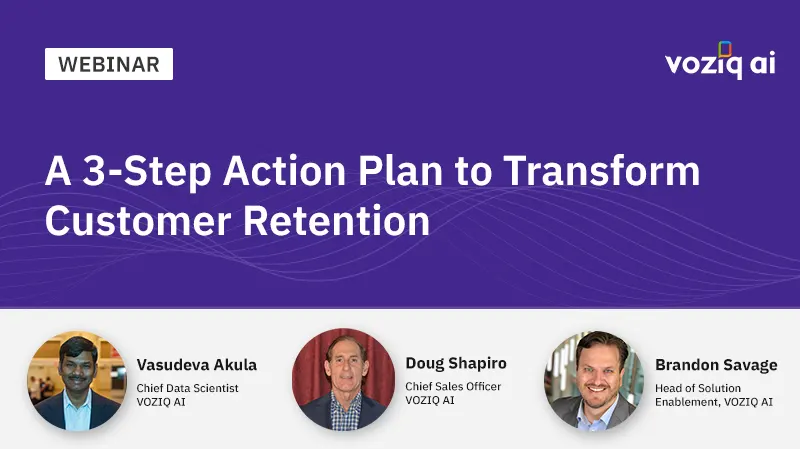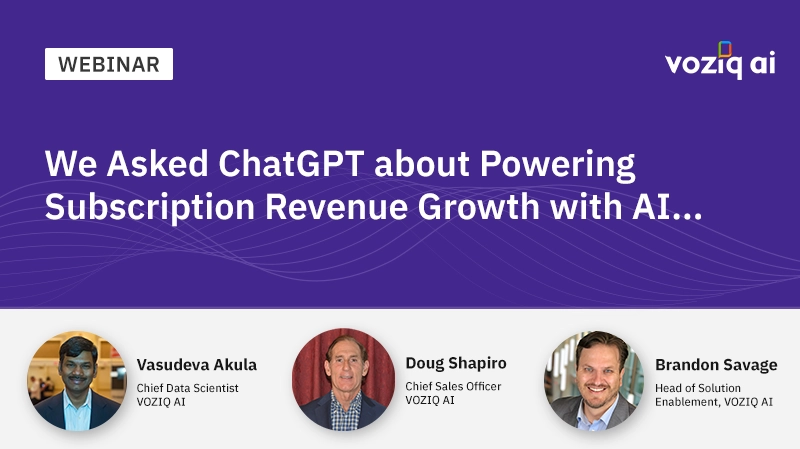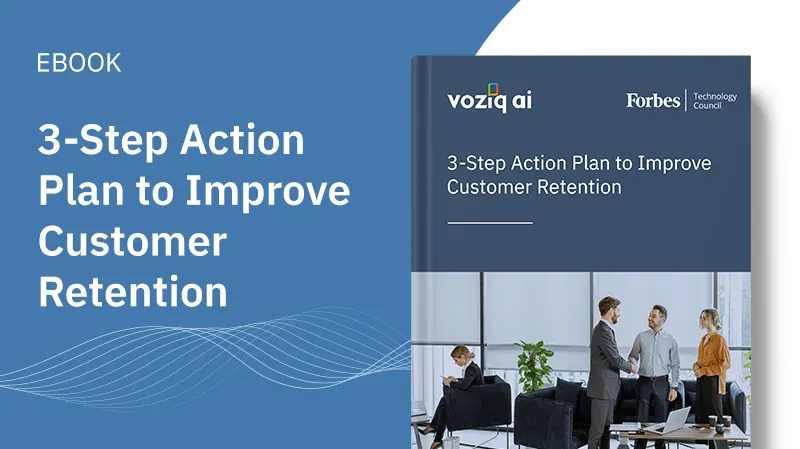The Proactive Edge: Leveraging AI For Customer Retention Success

The Proactive Edge: Leveraging AI For Customer Retention Success
In today’s rapidly evolving business landscape, customer retention is the North Star metric that significantly impacts profitability and growth, particularly for subscription businesses. According to a recent Global Customer Loyalty report, twice as many customer-facing companies worldwide are prioritizing investment in customer retention over acquisition this year, particularly amid the economic downturn. However, traditional customer retention strategies often fall short of delivering a significant impact.
This is precisely where artificial intelligence (AI) steps in. By integrating cutting-edge technologies with proactive customer-centric approaches, AI not only addresses these challenges but can transform them into lucrative opportunities to drive revenue and growth. Let’s delve deeper into AI’s transformative potential in reshaping customer retention strategies.
The Pitfalls Of The Traditional Approach To Customer Retention
Traditionally, businesses have focused on the visible signs of customer dissatisfaction and churn, such as customers calling to cancel, missed payments or non-renewal of subscriptions. The problem with this approach is that it offers limited visibility into the churn risk. There’s a lot more that leads to cancellation, which is often an outcome of accumulated customer dissatisfaction.
The traditional approach involves addressing the obvious indicators and fails to account for numerous subtle signs that precede cancellations. These signs may include:
• A customer mentioning a competitor.
Complaining about service quality.
• Inquiring about contract terms.
• Exhibiting low product usage.
• Repeatedly contacting customer service for the same issues.
Because the traditional approach is reactive, it kicks into play only when a customer expresses their wish to leave. Considering the ignored signs listed above, it’s too late to retain the customer, as they’ve already decided to leave. Instead, a successful customer retention strategy requires identifying these subtle signs at an early stage and acting upon them before they escalate into cancellations.
How AI Turns This Challenge Into An Opportunity
Although this is a dominant challenge, addressing it can boost customer retention and unlock a significant growth opportunity for subscription businesses. Here’s how AI can help you do it:
1. Take a life-cycle-based approach.
Traditional retention strategies only focus on either the end of the term or when a customer expresses significant dissatisfaction. They fail to address an issue as it arises. This leads to the accumulation of negative experiences and, further, to the decision to cancel.
AI transforms customer retention by continuously analyzing customer interactions and behaviors throughout the customer journey. It proactively identifies even the subtlest signs of churn, uncovering not just the obvious red flags but also the nuanced indicators of dissatisfaction. This allows you to take appropriate action, such as addressing underlying concerns or providing additional support to enhance the overall customer experience. Thus, you can anticipate and mitigate churn risk at every stage of the customer life cycle.
2. Assign a risk score to every customer.
Every customer has a different journey and, hence, different drivers and levels of risk. Therefore, knowing how many customers may cancel isn’t enough. For a profitable intervention, it’s critical to find out which customers might leave and, more so, why they might leave. Using customer interaction data, sentiment analysis and advanced machine learning, AI can offer a contextual understanding of churn risk and provide actionable retention intelligence.
One of the key features of AI-driven retention strategies is the creation of risk scores based on customer-level predictions. Similar to FICO scores in finance, these predictive scores assess various risk attributes to create a holistic churn risk profile for each customer. This empowers you with a deeper contextual understanding of why customers might leave, enabling you to tailor retention efforts for individual customers accordingly.
Besides churn risk, AI enables you to create a predictive score of various subscription revenue KPIs or goals, like NPS, retention rate, price increase, upsell, referrals and winback. It further opens up several revenue growth opportunities with existing customers.
3. Extend personalized retention offers.
One retention method may not resonate with every at-risk customer. And generic retention offers may initiate unnecessary conversations with customers who don’t need them. Through AI-driven personalization, you can effectively address customer needs and concerns, fostering greater loyalty and satisfaction while maximizing their growth potential in an increasingly competitive market landscape.
By knowing not just who might leave but also why they might leave, you can leverage AI to design highly targeted and personalized retention actions, such as tailored incentives and solutions for each customer, significantly improving the likelihood of acceptance. While working with our clients over the years, I’ve found that personalized retention offers can show up to a 400 basis points improvement in retention rates.
Conclusion
The integration of AI technologies offers subscription businesses a powerful arsenal in their quest for successful customer retention. AI-driven customer retention strategies not only help businesses retain more customers but also foster stronger relationships and increase overall profitability.
By leveraging machine learning algorithms to analyze vast amounts of customer data, businesses can predict churn, identify patterns of behavior indicative of dissatisfaction and personalize interventions to mitigate attrition. By understanding and responding to customer needs proactively, subscription businesses can also unlock new avenues for growth and thrive in an increasingly competitive landscape.






